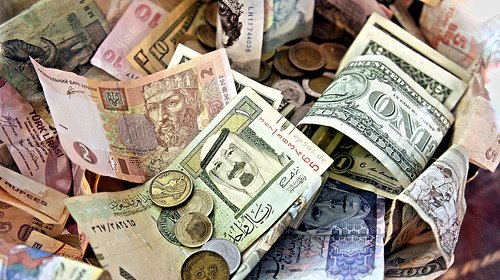Two years after the Budget Control Act of 2011 was signed into law in order to increase the debt ceiling, the world’s economy and markets are once again subjected to another crisis with the loans in the United States of America.
The United States of America owe about 17 trillion dollars and the debt is growing bigger with each second. According to the Finance minister of the USA, the country has nearly 30 billion dollars in the bank. Which meant that the Democrats and Republicans in the Congress did not raise the debt ceiling, the country would have declared bankruptcy for the first time in its history. Unlike most countries that have some form of debt, this country is unique with the fact that has self-imposed a debt ceiling, which is set by the administration in order to restrict national expenditure.
The debt ceiling of the country was 16.7 trillion dollars and it was reached by the Government in May this year. Since then the so-called “extraordinary measures” were applied and negotiations for raising the debt ceiling were lead. However, the negotiations led to nowhere, which brought the country into the trap of the deadline on October the 17th, by which the Congress must have decided whether to raise the debt ceiling or the country would have declared bankruptcy.
The stock obligations, as well as the system of daily lending system, which helped most banks operate, expressed their growing concern that the U.S. Congress would reach an agreement to increase the ceiling of government debt.
What would happen if the United States of America declared bankruptcy?
The USA is one of the largest debtors in the world, and the country is issuing bonds and stocks purchased by other countries and investors. The country has never stopped servicing its debts, and the dollar and the treasury bonds are placed at the centre of the International Financial System.
That is exactly the reason why a bankruptcy would be unprecedented and potentially catastrophic: the credit markets would freeze, the value of the U.S. dollar would fail, and the value of the interests would go upwards. Which actually means that a financial crisis and recession is also possible. Even if the United States of America continue to cover their debts somehow, this could lead to substantial withdrawal of the mutual funds from money market. A great deal of the bank loans to other banks will literally “go dry”. Remember the consequences after the bankruptcy of “Lehman Brothers” in 2008 – global financial panic, massive bank failures and a deep recession.
Thankfully, this scenario was not repeated because the Congress met the deadline of October the 17th and raised the debt ceiling, but most experts in the field actually agree that such an outcome is still possible. The crisis itself may have the same effect as in 2011 – a sharp drop in consumer and business confidence, and a serious turmoil in the financial markets. Should the United States of America declare bankruptcy, the country will no longer be able to meet its obligations on one hand to its large foreign creditors – china, Japan, the Caribbean banking centres, Brazil, Taiwan, Switzerland, Belgium, Luxembourg, Russia and Hong Kong, and on the other hand it won’t be able to cover its important domestic payments such as social benefits, salaries of federal employees, military and veterans’ benefits, medical coverage and interest.
How about the markets?
The Fitch global rating agency warned that it may cut the U.S credit rating by the end of the year and put its debt under observation. It this happens, Fitch would become the second major credit and rating agency after Standard & Poor’s, which will deprive the country of its AAA rating.
The experts claim that a possible bankruptcy of the United States may result in unprecedented financial chaos that will greatly affect the global economy. The financial markets that are heavily dependent on the U.S. treasury bonds would face literally devastating effects as the uncertainty about the value of purchases of stocks and bonds is growing rapidly.
The outcome
An agreement on a new debt ceiling of the U.S. Government was reached at the very last moment before the country declared bankruptcy. Traditionally, the Congress passed a law a few hours before the deadline. The federal government received the opportunity to draw loans until February the 7th, but in the meantime, the Ministry of Finance must approve some emergency measures in order to prevent a further increase of the debt.
The law plans extension of the funding for federal agencies by January the 15th, which were forced to reduce or even stop their work. The Senate approved the legislation with 81 against 18 votes. Later, the House of Representatives did the same with 285 against 144 votes.
Featured image License Some rights reserved by epSos.de



